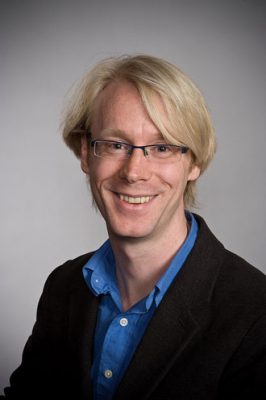
By William Raillant-Clark
Quantum mechanics is one of those terms that frighten the lay public – the popular image of being thrown helplessly through time and space probably doesn’t help. In reality, the term “quantum” simply means the smallest amount by which certain physical quantities can change. But small doesn’t mean insignificant, as demonstrated by some of the impressive leaps McGill researchers have made in the field this year.
Peter Grütter, Associate Dean of Research and Graduate Education, Faculty of Science, announced in May that he and a team of McGill researchers had developed a cantilever force sensor that enables individual electrons to be removed and added to a quantum dot and the energy involved in the operation to be measured. A quantum dot is a three-dimensional semiconductor, with a diameter of 10 to 50 atoms or 10 nanometres in diameter. By comparison, the diameter of the DNA double-helix is 2 nanometres. This achievement represents an important step towards the development of a replacement for the silicon chip in computers.
Then, just a few weeks ago, Patanjali Kambhampati of the Department of Chemistry published findings that detailed how his team of researchers had discovered a way to manipulate the piezoelectric effect of quantum dots. Piezoelectrics means the generation of an electric charge by the expansion or compression of a material, and it’s a well known effect that’s used in various products today such as watches and sensors. The effect had however never been controlled at the quantum level before, and the breakthrough opens the door for the development of a vast range of brand new applications.
It’s exciting progress such as this that convinced Bill Coish to accept a post in the Faculty of Science’s department of Physics. “I was contemplating a very strong offer in the U.S. from the University of Iowa, and was on my way to two more interviews at top universities in Germany,” Coish explained. “However, it was clear to me that McGill would provide an exceptional collaborative research environment, having many leaders in the broad field of nanoelectronics in the department of Physics, for example.” Originally from Winnipeg, he will join McGill on Sept. 1 from the Institute for Quantum Computing in Waterloo, Ont.
He describes his research as being directed at understanding the quantum-mechanical properties of nanometre-scale devices and the ways their properties can be exploited to improve future information technology. “It’s my job to understand the operation (and limitations) of the quantum devices used to implement these schemes from the point of view of theoretical physics, then make suggestions for improvements, or point out fundamental limitations,” he said. In short, it’s about turning our knowledge of quantum physics into actual tools we can use.
Coish is looking forward to getting into it. “At McGill, I hope to reach the very high standard of both teaching and research that is prevalent among existing faculty. Since my research dabbles a little in several traditionally separate subfields that are very well represented at McGill, I hope to foster fruitful collaborations with other researchers there. I’m very excited to see what we can do.”
“Bill is a rising star in the fascinating field of quantum information, and I am very excited by his decision to join McGill,” said Grütter, who is also Director of the Canadian Institute for Advanced Research’s (CIFAR) Nanoelectronics Program. “Bill’s insights and his expertise transcend disciplines and put us in a position to making huge leaps forward.”
Grütter also expressed gratitude to CIFAR for its help in recruiting Coish.
